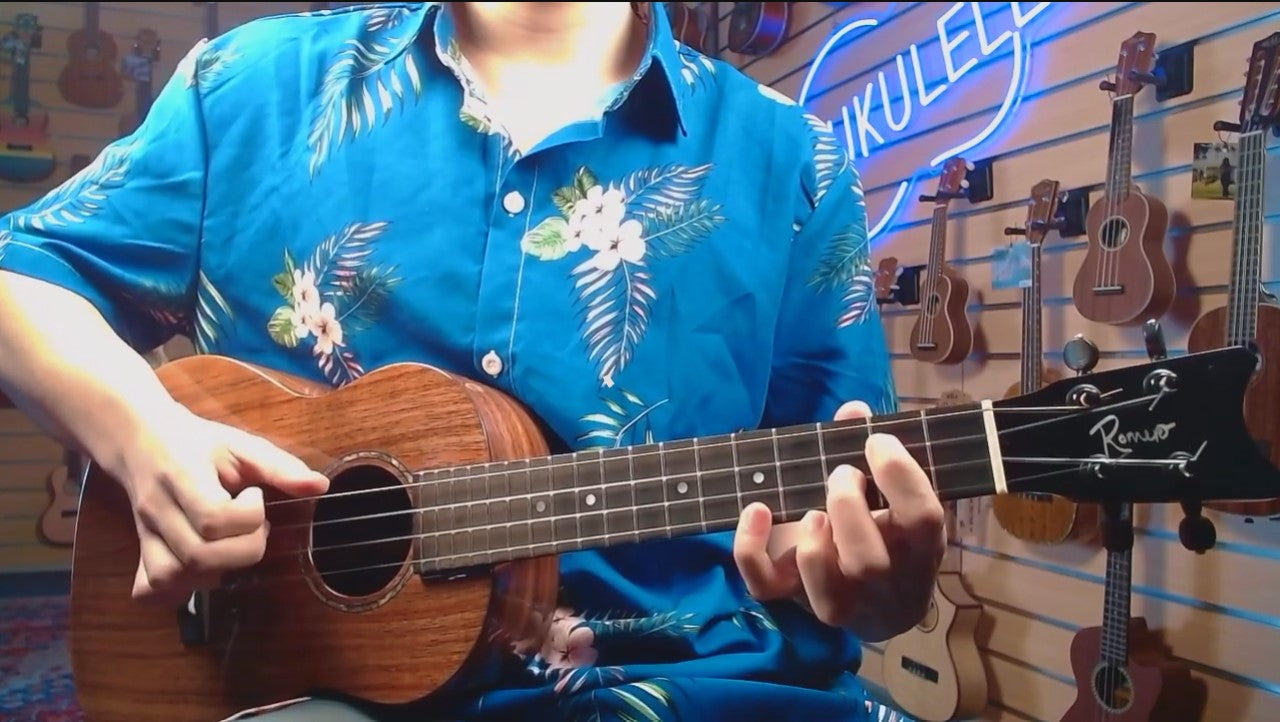Wood Matters: Exploring the Pros and Cons of Solid Wood and Laminate Ukuleles

With its adorable size and captivating melodies, the ukulele is a musical companion that tugs at our heartstrings.
But here’s the age-old question that plagues the minds of ukulele enthusiasts everywhere:
Should you buy a ukulele with solid wood or laminate construction?
It's like choosing between a warm, crackling fireplace on a winter's night or a flickering LED candle—both have their charms, but which one will serenade your soul?
Before we delve into a symphony of strumming, we must confront this pivotal crossroad: solid wood or laminate construction.
Fret not, dear reader, for together we shall embark on a harmonious adventure, unravelling the pros and cons of each choice.
So, grab a steaming cuppa, get cozy in your favourite chair, and let's waltz into this delightful stringed debate!
Solid Wood - The Allure of Authenticity
Picture this: you're sitting by the beach, the sun is setting, and your fingers effortlessly glide over the solid wood body of your ukulele.
Ah, bliss! Solid wood construction offers a traditional and authentic sound that resonates with ukulele purists.
The unique tonal character and warmth produced by solid wood can transport you to a tropical paradise, even if you're just strumming in your living room. It's like a Pina Colada for your ears!
However, keep in mind that solid wood ukuleles are more susceptible to changes in humidity and temperature. They require extra care and attention to maintain their pristine condition.
If you need more time to be ready for the responsibility of babying your ukulele, laminate construction is your jam.
How can you tell if a ukulele is solid wood?
To determine if a ukulele is made of solid wood, you can follow these steps:
Look at the grain patterns: Pay close attention to the ukulele's body's top (soundboard), sides, and back. The visible grain patterns in solid wood typically have a range of textures and colours. Clearly defined lines and patterns should be visible running through the wood.
Check for seams or joints: Ukuleles classified as solid wood have tops, backs, and sides made of a single piece of wood. Check the instrument carefully to see if you can spot any seams or joints. It is probably a laminated or layered wood construction if the ukulele is made of multiple pieces of wood.
Tap the body: Gently tap the top, sides, and other areas of the ukulele's body. When tapped, solid wood typically makes a rich, resonant sound. It might be a laminate or composite construction if it sounds hollow or dull.
Assess the weight: Comparatively speaking, laminate ukuleles are typically lighter than solid wood ones. Consider how much weight the object has in your hand as you pick it up. A laminate construction may be indicated if the instrument feels relatively light; in contrast, a solid-wood ukulele will typically feel heavier.
Research the manufacturer's specifications: If you want to know if the ukulele is made of solid wood, check the manufacturer's information or the product specifications. Reputable manufacturers often provide accurate information about the materials used in their instruments.
Seek professional advice: Consider consulting a luthier or an expert ukulele player if you are still unclear about the construction of ukuleles. With their knowledge and experience, they can provide insightful advice.
Keep in mind that whilst these techniques may offer a broad indication, they are not infallible. In some cases, ukuleles may have solid wood tops but laminate backs and sides, so it's important to consider the construction of different parts of the instrument.
Laminate - The Sturdy Sidekick
Laminate ukuleles, the superheroes of durability, are crafted from layers of wood veneer, giving them added strength and resistance to environmental changes.
These sturdy ukes can handle a few bumps and scrapes without losing their tune, making them ideal for globetrotting musicians or those living in unpredictable climates.
Now, you might be thinking, "But will the sound suffer?"
Well, dear reader, whilst laminate ukuleles may lack the tonal complexity of their solid wood counterparts, they still produce a pleasant, reliable sound.
They may not transport you to the same ethereal paradise, but they'll keep you strumming happily wherever your musical adventures take you.
Finding the Right Chords for You
Your personal preferences and playing style ultimately determine whether to choose solid wood or laminate construction.
A solid wood ukulele is the way to go if you are an experienced musician who yearns for that real, soulful sound and are prepared to put in the time and work to maintain it. Similar to owning a classic sports car, it requires some maintenance but is undeniably worthwhile due to the joy it brings.
On the other hand, if you're a beginner or an on-the-go musician seeking a reliable companion that won't falter under different conditions, a laminate ukulele is your faithful sidekick.
It's like a reliable hatchback—always there for you, no matter the weather or the occasional accidental bump.
Final Thoughts
Think carefully about your options as you start your ukulele journey. Will you opt for the authentic allure of solid wood or the steadfast reliability of laminate construction?
Remember, there's no right or wrong answer. It all boils down to your personal preferences and lifestyle.
Ultimately, what truly matters is the music you create, the joy it brings you, and the smiles it puts on the faces of those who listen.
So go ahead and strum away, try out some new songs, and let your ukulele be how you travel through the world of music.
Happy strumming!
 Lifetime Warranty
Lifetime Warranty  60 Day Returns Policy
60 Day Returns Policy 1-2 Day Delivery
1-2 Day Delivery 






























Leave a comment